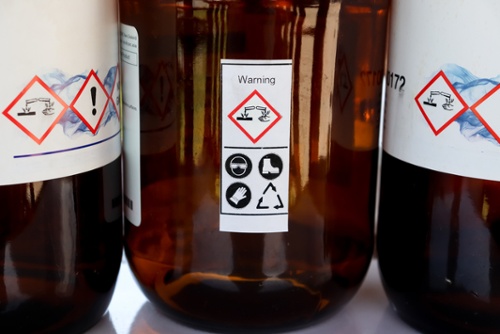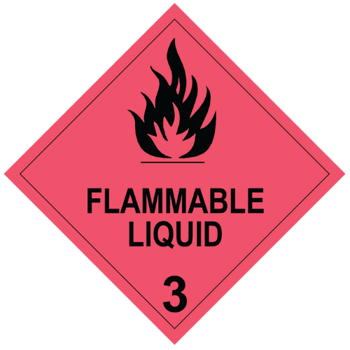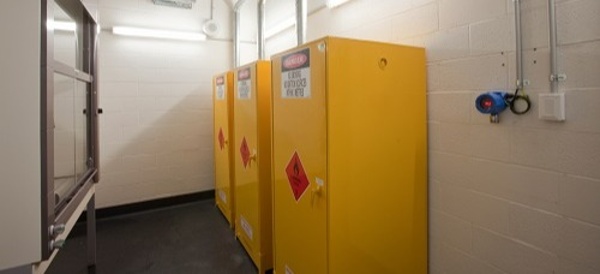A question that sometimes arises with our clients is “can we repurpose a safety cabinet for use with another class of chemicals?” While we don’t recommend trying this if you’re new to dangerous goods handling or storage, there are some (and we mean some) circumstances where you can safely transition a cabinet so that it can hold another class of chemicals. But – and this is a big one – there are specific considerations and procedures that must be in place before the cabinet will be safe to hold another dangerous goods class.
So, let’s get into this hot topic and discuss the considerations you’ll have to make before repurposing your cabinet.
REMEMBER: We strongly recommend you purchase safety cabinets that have been purpose built for the chemical hazard class you are storing. This is because chemicals react differently during storage and cabinets must be designed and constructed to mitigate those risks. However, this post does describe some specific circumstances where certain chemical cabinets can be repurposed if they’re deemed suitable — and the repurposing process is handled in the correct manner.
What are the Different Safety Cabinet Types?
Storemasta cabinets and outdoor storage containers are all made to meet the specific requirements of the applicable Australian Standard. Each dangerous goods class has a corresponding Standard which details the construction requirements for the storage unit.
The Storemasta Class 3 cabinet is specifically constructed for the storage of flammable liquids, with features that reduce the risk of flammable vapours and heat radiation.
Due to these construction requirements, there are some types of safety cabinet that can be repurposed for use with another class of dangerous goods. Let’s have a look at the requirements for some commonly used dangerous goods classes, so we can see the differences (and similarities) in design and construction.
Flammable Liquids Cabinets (Class 3)
Flammable liquids cabinets must be made of double-walled sheet steel and have componentry that can withstand temperatures of at least 850 °C. They also have perforated shelves which allow flammable vapours to move freely within the cabinet. These cabinets are designed to be liquid tight and fully contain flammable vapours, to reduce the risk of fire and explosion. Therefore, Class 3 cabinets must have close fitting doors that close automatically.
TIP: Chemical properties, and the hazards associated with the substance, can vary depending on the chemical manufacturer or supplier. Don’t ever assume that a chemical product is of a particular class simply because you have been using a similar chemical type. Always refer to the safety data sheet for each and every chemical product onsite.
- Storemasta flammable liquids cabinet are constructed to meet the requirements of AS 1940 – The storage and handling of flammable and combustible liquids.
Flammable Solids (Class 4)
Class 4 cabinets and their componentry must be able to handle temperatures of at least than 850°C without melting or affecting the protective function of the cabinet. These chemical cabinets require doors that close automatically (to prevent the release of flammable vapours), but they must be held shut by magnetic or friction-type locks so the doors can release if pressure within the cabinet builds.
Division 4.1 and Division 4.2 goods must be kept in indoor fire-resistant cabinets. A key requirement for Division 4.3 cabinets is that they must protect the goods from exposure to water in any form, including atmospheric moisture.
- Class 4 cabinets from Storemasta are made in full conformance with AS 5026 — The storage and handling of Class 4 dangerous goods.
Oxidising Agent Cabinets (Class 5.1)
Indoor safety cabinets for the storage of oxidising agents should be made of double-walled sheet steel. Due to the risk of oxidisation, the door hinges and catches must not be made of zinc die castings or any type of plastics. These cabinets require self-closing doors, but the catches must release in the event of pressure build up. Mechanical ventilation is required.
- Storemasta oxidising agent cabinets are made to meet the requirements of AS 4326 — The storage and handling of oxidizing agents
Organic Peroxide Cabinets (Class 5.2)
Cabinets for organic peroxide storage require self-closing doors which are held shut by a friction or magnetic-type lock that will release if pressure builds up in the cabinet. They also require ventilation at high and low levels to prevent the build-up of toxic or flammable vapours. Organic peroxides are sensitive to changes in temperature, so their cabinets require ventilation and measures to prevent heat build-up (double walled steel construction with a space at least 40mm, filled with air or non-combustible insulation).
- Organic peroxide cabinets from Storemasta are constructed in full conformance with AS 2714 — The storage and handling of organic peroxides.
Toxic Chemical Cabinets (Class 6.1)
Cabinets for toxic substance storage require double-walled sheet steel construction, self-closing doors. These toxic substance cabinets must be fully lockable to assist with the prevention of toxic substances being accidentally released into the workplace or the environment.
- Storemasta Class 6 cabinets are constructed to meet the requirements of AS 4452:1997 — The storage and handling of toxic substances
Corrosive Substance Cabinets (Class 8)
To prevent the corrosion of the storage equipment itself, Class 8 cabinets must either be made from a non-corrosive material (such as polyethylene) or constructed with corrosion-resistant linings. Strong corrosives are therefore generally stored in polyethylene cabinets, while less corrosive substances may be stored in a metal cabinet with PVC spill trays. Class 8 cabinet doors must close automatically and fit tightly to contain these harmful corrosive vapours. Other features of the doors include not opening inwards, with the doors also able to be opened from within the cabinet.
- Storemasta Class 8 cabinets are constructed to meet the requirements of AS 3780:2008 — The storage and handling of corrosive substances
What Cabinets Can Be Repurposed?
As you can see from the lengthy list of features in each class of cabinet, there are differences and similarities between certain cabinet classes.
The key feature that can distinguish the cabinet class from another model is the way that the cabinet doors are constructed.
In the below table, we’ve collated a general list of cabinets that may be suitable to consider for repurposing (after decontamination, signage changes, considerations regarding cabinet location, staff training and standard operating procedures etc have been completed).
| Cabinet Class | Key Features | May Be Suitable to Repurpose with: |
| Storemasta Class 3 flammable cabinets | self-closing, close-fitting doors; held shut automatically by catches at 2 or more points | toxic substances |
| Storemasta Class 4 cabinets | self-closing, close-fitting doors; held shut by magnetic-type lock designed to auto release | oxidising agents (with the addition of mechanical ventilation) |
| Storemasta Class 5.1 oxidising agent cabinets | self-closing, close-fitting doors; held shut by catches that can auto release; door catches and hinges not made of plastics or zinc die castings. Requires ventilation for oxidising agents. | flammable solids (4.1), spontaneously combustible (4.2), dangerous when wet (4.3) or organic peroxides. However, the existing ventilation system must be compliant and suitable for the new substance. |
| Storemasta Class 5.2 organic peroxide cabinets | self-closing, close-fitting doors; held shut by magnetic-type lock designed to auto release; door hinges and catches not made of plastic. Metal catches and hinges are acceptable. Requires ventilation for organic peroxides. | flammable solids (4.1), spontaneously combustible (4.2), dangerous when wet (4.3) or oxidising agents. However, the existing ventilation system must be compliant and suitable for the new substance. |
| Storemasta Class 6 metal cabinet for toxic substances | self-closing, close-fitting; lockable doors | flammable liquids |
| Storemasta Class 8 corrosive substance cabinets | self-closing, close-fitting doors; held shut automatically by catches at 2 or more points; not able to open inwards; must be able to be opened from inside. | While these cabinets have the unique feature of being able to be opened from inside the cabinet, they may still be suitable for flammable liquids or toxic substances (with the removal of the corrosive cabinet PVC spill trays) |
IMPORTANT: Our team at Storemasta always suggest that you conduct a proper risk assessment that considers chemical and physical properties of the chemicals that you’re storing prior to purchasing any dangerous goods storage equipment. Refer to your safety data sheets and don’t simply rely on the dangerous goods class of your substances when you’re determining hazards and incompatibilities.
Key Considerations
Now that we’ve looked at some Storemasta compliant safety cabinets that may be considered if you’re looking to repurpose, it’s time to consider the other important factors that will help you transition your cabinet. To make it simpler for you to determine if repurposing a cabinet for another chemical class if a feasible option, here’s some basic steps that you can take.
Consider some of the following when determining if your cabinet can be repurposed.
Design Features
Does the existing cabinet share the same design features as the other class of chemicals? If the features are the same, there is the capability for you to consider repurposing. However, cabinets with different design features can’t be used for other classes.
Capacity
Is it a suitable capacity for the kept chemicals? While you may be able to use the cabinet for another dangerous goods class, the capacity may not suit your requirements.
You will also have to consider that the capacity may be affected by the location of your cabinet, as well as other chemicals present in the location. The class and packing group of your chemical will also affect the maximum quantities allowed in cabinets.
You may have to change the signage to limit the capacity of your repurposed cabinet ie changing a 100L capacity to 60L.

The capacity of your cabinet may be altered if you choose to repurpose it for another type of chemical.
Package Type
Does it suit the type of packages that you’re storing? Chemical packages will sit differently on the cabinet depending on their shape and size. Consider if the new packages will be able to comfortably sit in the cabinet without overloading the capacity requirement.
Decontamination
Do you have the capability to successfully clean out and decontaminate the cabinet prior to repurposing? Any quantity of chemical residue can create a dangerous situation where the new chemicals may interact with the remaining residue. Vapours and liquids can remain in the cabinet, with residue potentially remaining in the spill sump, within the joins of the cabinet, on or under the shelving and more.
IMPORTANT: Review your Safety Data Sheets and the Australian Standard (Sections: clean-up materials and equipment, chemical spills, pre-disposal treatment of empty containers etc can assist with decontamination advice) to determine the correct way to clean up and decontaminate equipment. Without the proper decontamination process, your equipment will NOT be able to be repurposed with another chemical class due to the possibility of the chemical residue interacting with the new stored substances.
Signage
Ensuring compliant signage is visible at all times is part of your ongoing WHS obligations. In addition to this, when considering repurposing a cabinet, consider that cabinets are usually painted a specific colour that is meant to denote the chemical class.

You must have the correct DG signage and hazard signage on your chemical safety cabinet.
To avoid staff accidentally using the cabinet for the wrong chemicals, it’s extremely important to ensure that the signage is changed over prior to repurposing the cabinet.
REMEMBER: Make sure you’re organised the appropriate dangerous goods signage (Dangerous Goods diamond) and hazard signage for the cabinet. Also make sure that you’ve notified all staff – and they’re trained to use the new chemicals as well as the cabinet that they’re stored in.
Location
Is the location of the cabinet still suitable for the chemical hazards associated with the new products? Refer to your safety data sheet and the applicable Australian Standard for your new chemicals to determine the proper location and installation procedures for your cabinet.
Be aware that issues such as proximity to ignition sources, incompatible substances, aggregate quantities, heat, direct sunlight etc. may impact where you locate (or relocate) your repurposed cabinet.
Access your FREE segregation chart
Compatibility Concerns
In addition to the type of cabinet, the cleaning and decontamination process, and the location of the equipment, there are many other factors that will change when you introduce a new chemical to your workspace.

Make sure that all staff are re-trained to handle and store the new substances. Make sure they understanding that the original colour coding of the indoor safety cabinet no longer applies.
Consider:
- Spill kits – do you have the appropriate spill kits for this new class of chemical, as well as a suitable amount of absorbents that will not react with the new substance?
- Ventilation – will your cabinet require a mechanical ventilation system if the chemical vapours exceed safe levels?
- Update of Emergency Procedures – with the introduction of a new chemical (that has its own set of hazards), you may need to update your emergency protocols to ensure staff and community stay safe from fires, explosions, toxic spills or other incidents.
- Personal Protective Equipment – check the safety data sheet to determine the new personal protective equipment that will be required to safely handle your new chemical class.
- Handling Procedures – in addition to training the staff on how to operate the cabinet, you’ll have to change your handling procedures so staff can mitigate the hazards posed by your new chemicals.
- Housekeeping – any inspections, maintenance or housekeeping for the cabinet must also follow the requirements of the new safety data sheet, as well as conform with the applicable Australian Standard.
- Risk Assessment – it’s always a good idea to conduct a risk assessment when any new chemicals, equipment or work tasks are onsite. This allows you to determine whether any new hazards have been created since the implementation of the repurposed cabinet and new substances.
- Emergency Equipment – refer to the Standard and your risk assessment to see if you require eyewash and/or safety showers installed near your cabinet.
- Register of Hazardous Chemicals – when changing chemicals in your workplace, you must always update the register of hazardous chemicals to include the new substances.
- Safety Data Sheets – have you discarded the old safety data sheets and replaced them with the new SDS for the substance? Are they the current SDS version (less than 5 years old)?
REMEMBER: Keeping your safety data sheets in a durable document storage box allows staff to quickly access the documents when required. We suggest keeping the SDS in a storage box, with one attached to each and every cabinet that you have onsite. This ensures that the applicable safety data sheets stay with the cabinet, saving valuable time and unnecessary confusion for staff who are seeking them.
Safer Storage for your Classes of Chemicals
If you need some assistance with your dangerous goods storage, why not buy a copy of our latest eBook? The First Edition of our Ultimate Handbook outlines all the key considerations when purchasing storage and handling equipment for your business. At just $6.99 + GST, it’s a small price to pay for maximum chemical safety at your site.
Joining the team as a Dangerous Goods Storage Consultant, Melissa Hampton became Storemasta's Marketing Manager in late 2021. With extensive knowledge and experience in chemical compliance, Melissa is responsible for leading the Marketing team and helping shape their marketing strategy. In her spare time, you can find Melissa hiking, swimming and enjoying the great outdoors in beautiful north-west Tasmania.

